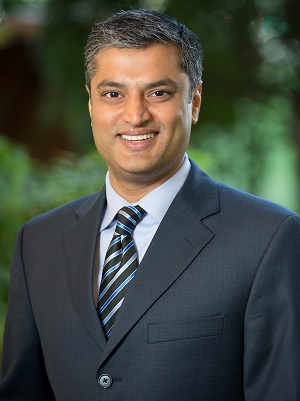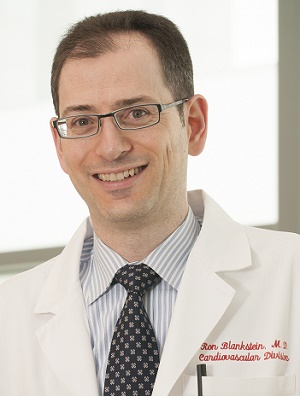Top News in Clinical Cardiology: 2018
Big-name trials in imaging, drugs, and structural heart disease have specific implications for clinical cardiologists, as do new cholesterol guidelines.
The biggest news of 2018 in clinical cardiology spanned from key imaging and pharmaceutical trials—which will have a big impact on clinical cardiologists—to new ways of delivering care, according to experts.

The SCOT-HEART trial was mentioned to TCTMD by both Ron Blankstein, MD (Brigham and Women’s Hospital, Boston, MA), and Martha Gulati, MD (University of Arizona, Phoenix).
“The reason I found it important,” Gulati said, “wasn't that the imaging reduced heart attacks or anything. But I think it provided both patients and physicians with evidence of disease or lack thereof and helped dictate treatment and helped them not just getting medications but lifestyle changes. We see this clinically, and this study really supported it.”
While SCOT-HEART generated much discussion about the mechanism of how an imaging test could lead to a reduction in events, Blankstein stressed that the “tests themselves don't change the outcomes. Rather, he said, “it has to do also with how we as physicians act on the results of tests and also how patients may change their behavior.”
Gulati also pointed to the CONSERVE study, published recently in JACC: Cardiovascular Imaging, which showed that CTA is a good gatekeeper for patients with suspected CAD whose risk level makes them clear candidates for invasive coronary angiography, while reducing diagnostic costs by more than half. “This is the time for CT, and I think what we as cardiologists want is [insurance companies] to really take a look at this literature . . . because right now the biggest barrier to us putting all these excellent trials into place has been limited by [the fact that] it's not covered by insurance,” she observed. “It should be covered by insurance when it's appropriately indicated, and I think for the intermediate-risk patient who comes in with angina, it can be first-line.”
Updated Guidelines

Blankstein as well as Brahmajee K. Nallamothu, MD (University of Michigan, Ann Arbor), said the new cholesterol guidelines released by the American College of Cardiology (ACC) and American Heart Association (AHA) in November were one of the top news items of 2018.
As Blankstein noted, “it calls for clinicians and patients to have a risk discussion about how to really consider all the different risk factors that patients may have and together make a decision about whether patients should be on cholesterol lowering medications.” He mentioned that the guidelines also for the first time suggest calcium scoring as a useful tool for patients in whom there is uncertainty about the need for cholesterol-lowering therapy. “That's an important step forward in the guideline to [not only] advocate for more shared decision-making but also [add] a test that may provide more personalized risk assessment,” Blankstein said.
Nallamothu told TCTMD the further evidence supporting PCSK9 inhibitors with the publication of the ODYSSEY trial this year, along with “the explicit recognition of these drugs as well as their role in clinical care by the guidelines,” proves their future importance for clinical cardiologists.
Also, he continued, “the guidelines themselves were interesting because they created this very-high-risk category to try to understand or at least target the types of patients who might be the best candidates for these drugs, and again the guidelines were more explicit about discussing the risks and benefits and even resources and costs associated with these drugs, which was good because those are not easy topics to talk about.”
Prevention and Resources
Blankstein also highlighted the REDUCE-IT trial as interesting “because it was a surprise.” Several prior studies looking at fish oil supplements showed no difference in outcomes, and while this analysis used a specific prescription omega-3 fatty acid formulation, icosapent ethyl (Vascepa; Amarin), and also included patients with elevated triglycerides, it showed a significant reduction in ischemic events and cardiovascular death. “This was on top of excellent baseline therapy, because they only included patients that basically already were on a statin and already had low LDL cholesterol,” he said. “It really provides us with yet another agent that can reduce events that we now have to at least keep in our armament when deciding how to treat high-risk patients.”
In the future, Blankstein said he could see this agent being studied in primary prevention patients with high triglycerides or subclinical atherosclerosis. “There's a lot more to come from this drug . . . that all of us will stay tuned to,” he predicted.

Yet another trial that has already had clinical implications on the field was the barbershop trial, which demonstrated an average drop in systolic BP of 27 mm Hg over 6 months in patrons when their barber teamed up with a pharmacist to promote better hypertension treatment, Nallamothu noted. “The reason that it was such a big story is that I think with all the long history of clinical research just documenting disparities of care across different groups in the United States, and this in spite of all of the rising health care costs that we have, people have been looking for innovative models in which they can deliver care more in the community,” he said. “And it's been a struggle.”
Along with his team’s FAITH study, both analyses “tried to look at these types of systems of care in a much more different environment, so that was really the innovation,” Nallamothu observed. “The next step toward this is trying to understand how we can set up systems where we can perhaps provide the same types of level of care but outside of a clinical trial setting. . . . The key to moving forward is how we can do this so that we're not going to bankrupt health systems.”
Overall, Blankstein defined prevention as the theme of 2018 clinical cardiology research. “We think of prevention as a broad topic, both for patients and sometimes we use these categories of primary and secondary prevention,” he said, “But it's really a continuum of patients and risk, and prevention is: how do we prevent future events?”
Mitral Regurgitation
Lastly, Nallamothu said it makes sense that the COAPT and MITRA-FR trials would make headlines in the field of structural heart disease, noting that mitral regurgitation (MR) is “a common problem that clinical cardiologists face.
“Heart failure is a huge problem, and the attempts at dealing with mitral regurgitation in this cohort can be very challenging,” he continued. “These patients are not always the best surgical candidates, and I think the uncertainty with two well-done studies that are showing contradictory results has been a bit confusing. . . . Everyone's waiting now for the results of a few upcoming studies, but we're also trying to understand a little bit here and there about why these two trials were so different.”
COAPT will “be instrumental in defining how we treat patients that have secondary MR and also will have some implications for future studies in this space, [which] now will have a higher bar basically to have to show similar results,” Blankstein added. “Also, [it] will put a lot of emphasis I think on clinicians and on imagers as to how to decide between all the different procedures that might be available for patients with mitral regurgitation.”
Click here for more from TCTMD’s 2018 Year in Review.
Yael L. Maxwell is Senior Medical Journalist for TCTMD and Section Editor of TCTMD's Fellows Forum. She served as the inaugural…
Read Full BioDisclosures
- Blankstein reports receiving research funding from Astellas and Amgen.
- Gulati reports no relevant conflicts of interest.
- Nallamothu reports receiving funding from the National Institutes of Health, VA HSR&D, and American Heart Association; compensation as Editor-in-Chief of Circulation: Cardiovascular Quality & Outcomes; and being a co-inventor on a patent held by the University of Michigan and licensed to AngioAid, in which he holds ownership shares.


Comments